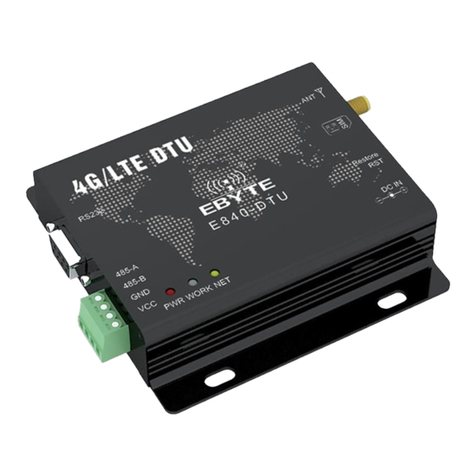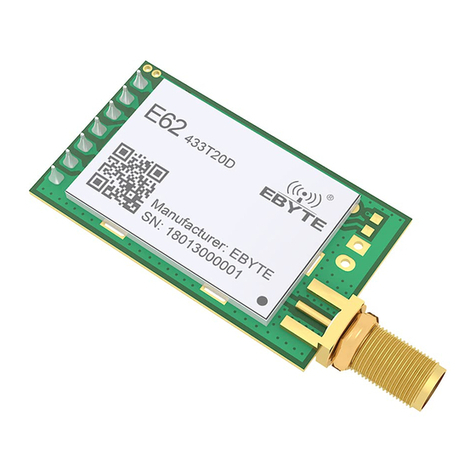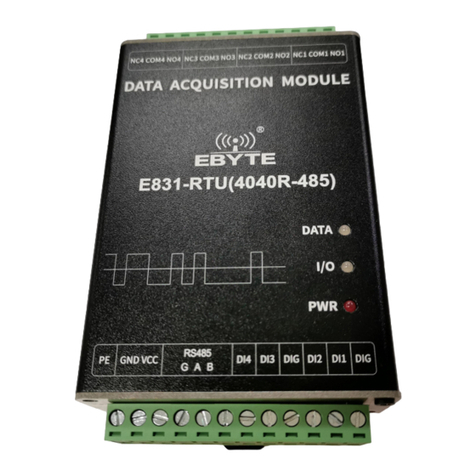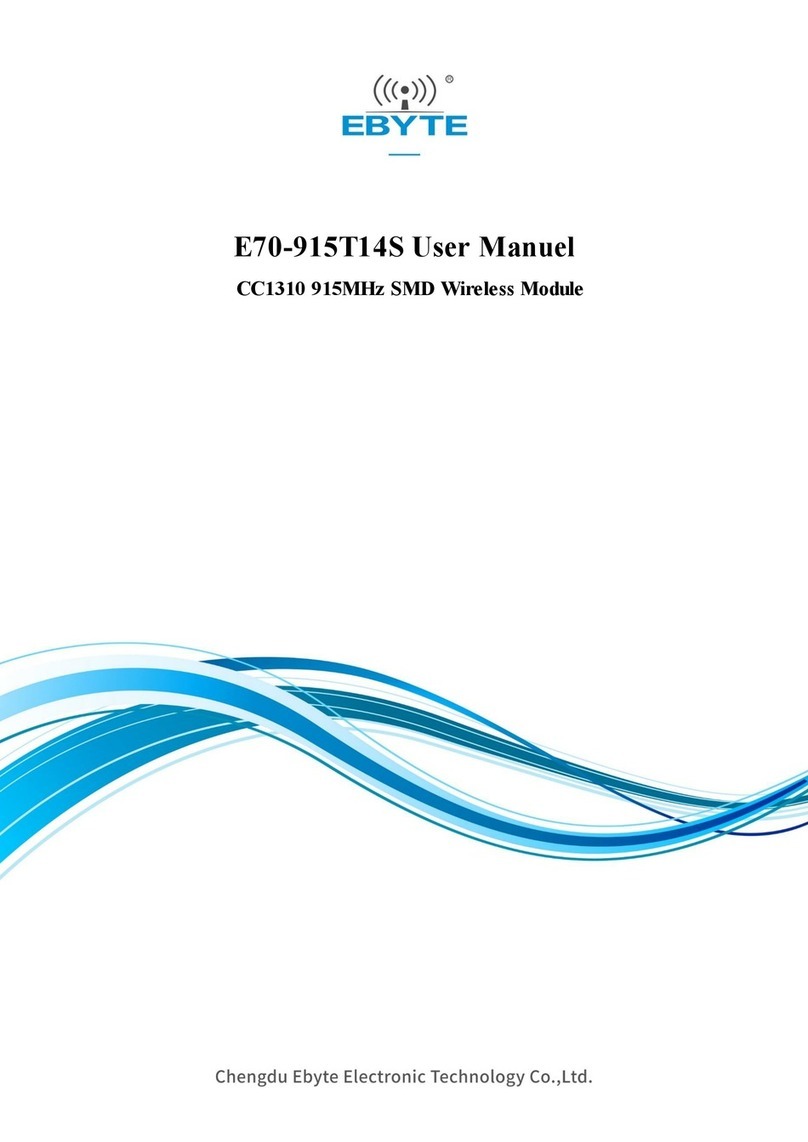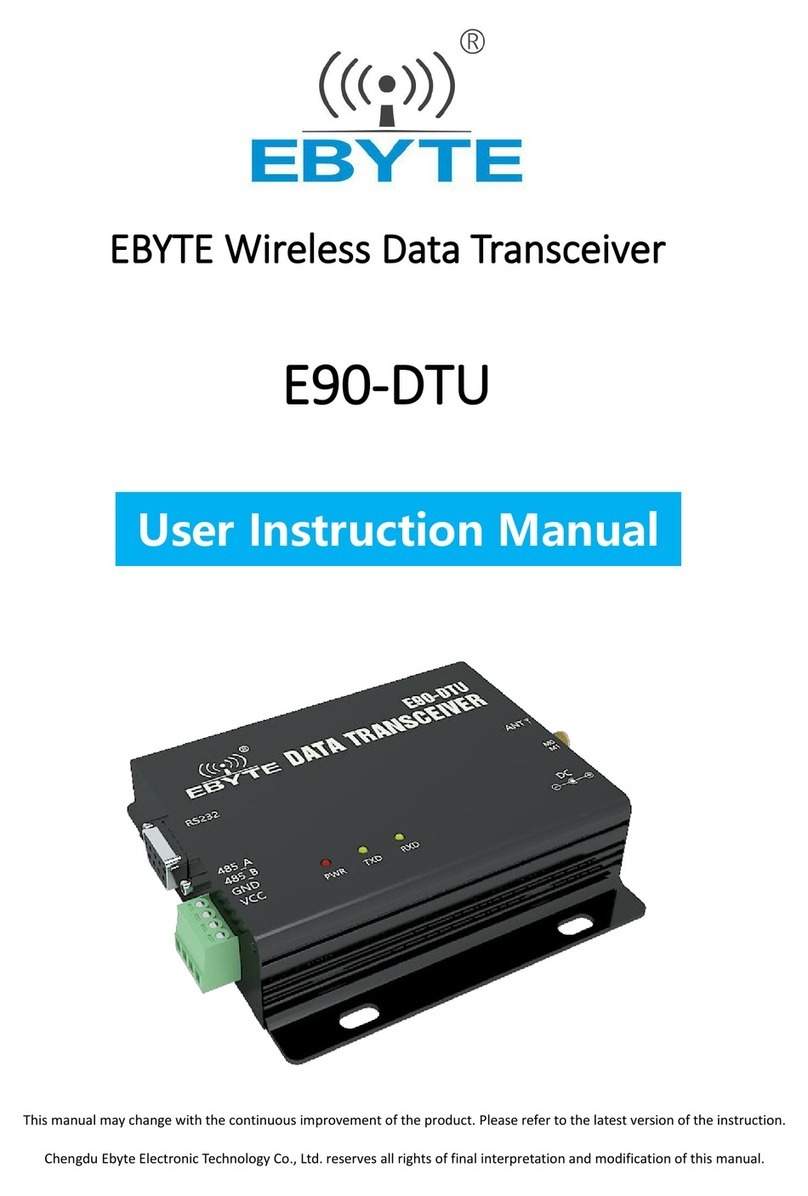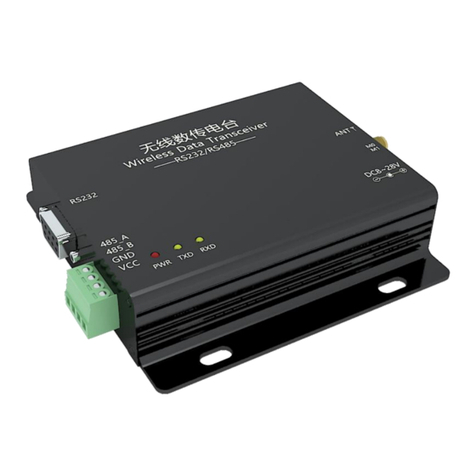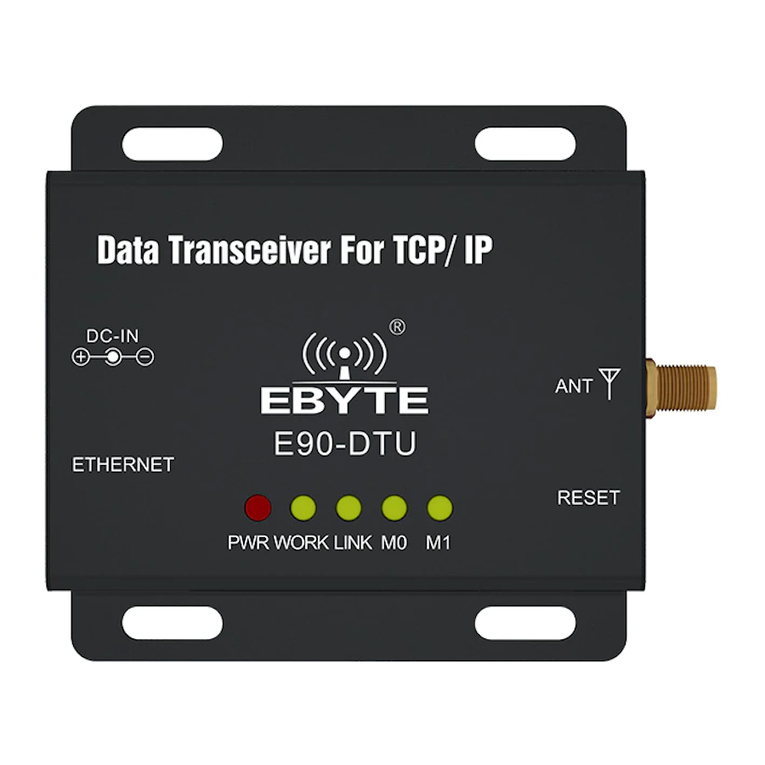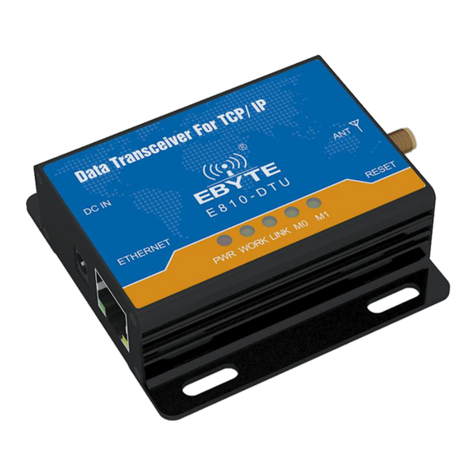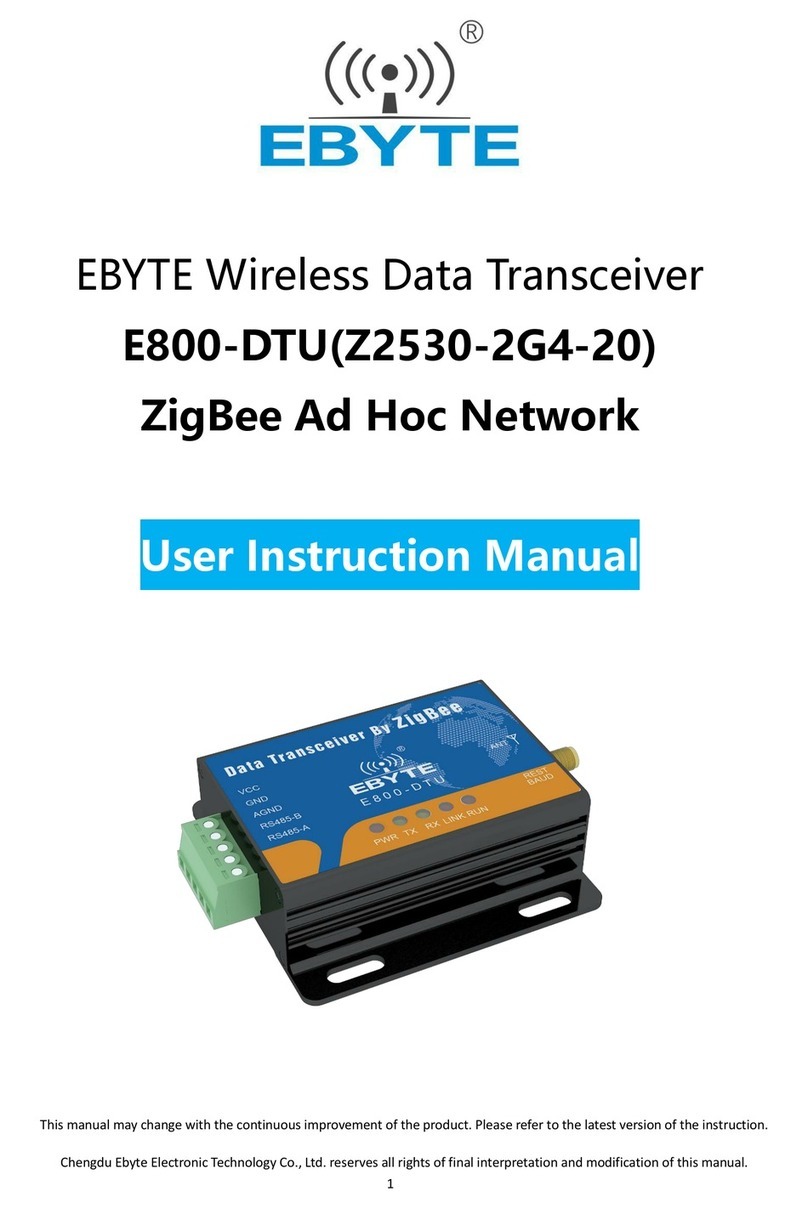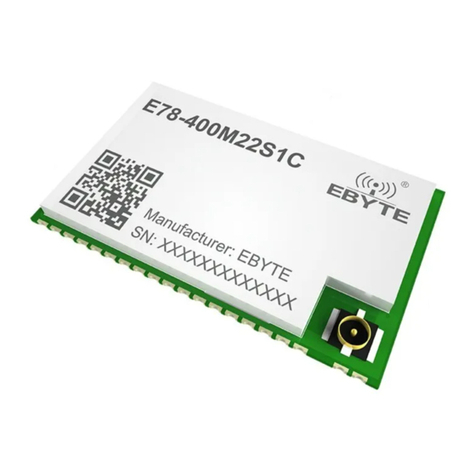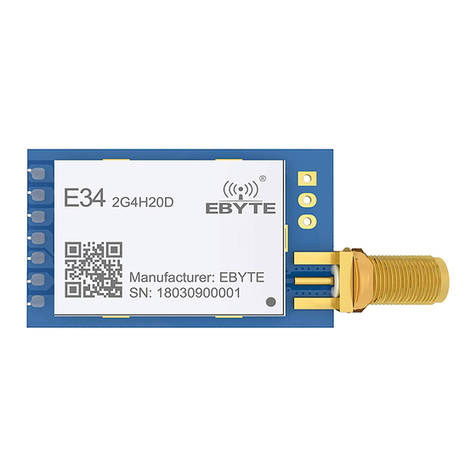
Chengdu Ebyte Electronic Technology Co., Ltd. E90-DTU(400SL30P)User manual
Copyright ©2012–2019, Chengdu Ebyte Electronic Technology Co., Ltd
Contents
1. Introduction.................................................................................................................................................................3
1.1 Brief introduction..............................................................................................................................................3
1.1.1 Certificate...............................................................................................................................................3
1.1.2 Features.................................................................................................................................................. 3
2. Quick Start.................................................................................................................................................................. 5
3. Dimensions................................................................................................................................................................11
3.1 Parts description..............................................................................................................................................11
4. Interface definition....................................................................................................................................................13
4.1 Power interface............................................................................................................................................... 13
4.2 RS232..............................................................................................................................................................14
4.3 RS485..............................................................................................................................................................14
5. Technical specification..............................................................................................................................................15
5.1 Model specification.........................................................................................................................................15
5.2 General specification parameter..................................................................................................................... 15
5.3 Frequency and channel numbers.................................................................................................................... 15
5.4 Transmitting power......................................................................................................................................... 15
5.5 Air data rate.....................................................................................................................................................16
5.6 Current............................................................................................................................................................ 16
5.7 TX and RX FIFO and sub-packing method....................................................................................................16
6. Function Description.................................................................................................................................................16
6.1 Fixed Transmission(Hexadecimal)............................................................................................................16
6.2 Broadcast Transmission(Hexadecimal).....................................................................................................17
6.3 Broadcast Address........................................................................................................................................17
6.4 Monitor Address..............................................................................................................................................17
7.1 Normal mode(Mode 0)..............................................................................................................................18
7.2 Wor sending mode(Mode 1)......................................................................................................................18
7.3 WOR receiving mode(Mode 2).................................................................................................................18
8. Relay networking mode............................................................................................................................................ 19
9. Configuration instructions on computer................................................................................................................... 21
9.1 Configuration considerations..........................................................................................................................21
9.2 Factory default parameters............................................................................................................................. 21
9.3 Configuration software and parameter description........................................................................................ 21
Three main configuration function descriptions.......................................................................................... 22
Local configuration.......................................................................................................................................23
Remote configuration................................................................................................................................... 24
RSSI real-time monitoring............................................................................................................................25
9.4 Configuration parameter description of upper computer............................................................................... 25
10. Programming the modem........................................................................................................................................29
10.1 Connection diagram......................................................................................................................................29
11. Connection diagram in test and practical application.............................................................................................30
12.E90-DTU(SL Series)................................................................................................................................................31
13.Application field...................................................................................................................................................... 32
14.Operation notes........................................................................................................................................................ 33
